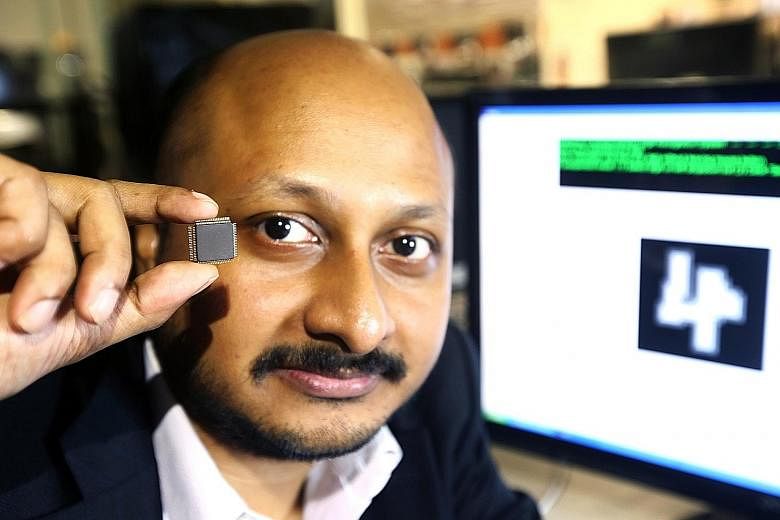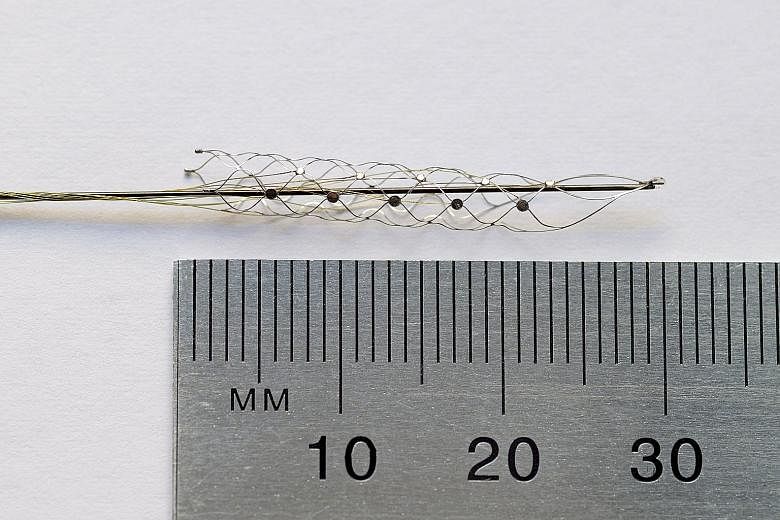Paralysed people could one day translate their thoughts into physical acts via smart chips in their brains, to control robotic limbs.
Such a chip has been developed by a team of four scientists at the Nanyang Technological University (NTU). The chip - the size of a five-cent coin - could be used in brain implants to decode neural signals and translate them into the action desired.
There are already neural implants undergoing clinical trials. But these need to be connected to a computer that decodes the brain signals outside the body.
Permanent openings in the skull are also necessary for the wires to reach the brain, increasing the risk of infection.
Wireless prototypes, on the other hand, have so far suffered from a lack of accuracy.
The chip from the NTU team is, however, able to transmit the brain signals wirelessly with an accuracy of 95 per cent, said lead researcher Arindam Basu.
A paper on the invention was published in the journal IEEE Transactions on Biomedical Circuits and Systems last month.
As the chip is also able to compress the data it decodes before transmitting it to an external receiver, it requires much less energy to power it, added Dr Basu.
It will need to be recharged wirelessly - done by placing a charger on the patient's head, above where the chip is - only every 11/2 days instead of every seven hours, as required by current neural implants.
Elsewhere, researchers have also been making waves with their efforts to help the disabled to move again.
An Australian-made bionic spine will enter human trials next year, and it also promises the ability to move bionic limbs with thoughts. This involves putting a small stent into the brain through the jugular vein in the neck.
Dr Basu believes, however, that the NTU chip could work quicker.
He said it records brain signals with 10 times more bandwidth, and is therefore processing more data from the brain.
Human trials will take time, though, he added, noting that it could take at least a decade before the chip is tested in neural implants in people.
For the immediate future, the team is looking to use the chip for security purposes, as it is designed to analyse data patterns and spot any abnormal or unusual patterns.
NTU has partnered Singapore Technologies Electronics to test it in wireless surveillance cameras, to allow the cameras to run for a month without recharging - five times longer than those now on the market.
Instead of sending an entire stream of recorded images, the chip is able to represent them in text. For example, it will send a message to the command centre saying that two lorries drove past in the last three hours instead of sending three hours of footage. Visuals can then be extracted if needed.
Field trials on the camera will take place at the end of the year.


